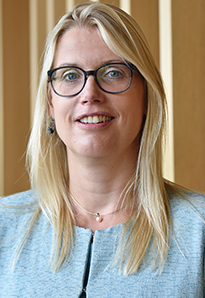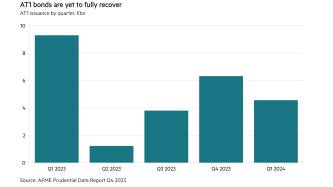Central banks need to be experimenting with, and investing in, emerging technologies, according to Petra Hielkema, director of payments and market infrastructures at De Nederlandsche Bank (DNB), the Dutch central bank. This will help them keep abreast of market developments in the current fast-changing environment, as well as understand how new technologies, such as artificial intelligence (AI) and blockchain, can be deployed safely. Embracing innovation is a key pillar in the DNB's Payments Strategy 2018-21.
DNB, for example, has developed and evaluated four prototypes based on distributed ledger technology (DLT) over the past three years. “We started with baby steps, understanding the Bitcoin software and mining in a centralised versus decentralised way. Then we built prototypes and tested whether DLT networks could benefit parts of our market infrastructure while still providing the functionality needed in payments,” says Ms Hielkema.
Career history: Petra Hielkema
- 2017 De Nederlandsche Bank (DNB), director of payments and market infrastructures
- 2015 DNB, department head, expert centre fit and proper testing
- 2013 DNB, department head, insurance policy
- 2007 DNB, senior policy adviser
So far, its findings are “not that positive”, she says. DLT’s limitations include capacity shortages, inefficiency caused by high energy consumption, and a lack of full certainty that a payment is completed, according to DNB’s report. Ms Hielkema, however, acknowledges the continual work being done by the blockchain community to address these issues. “We do think this technology is promising but more innovation is needed,” she adds.
Cross-border payments is an arena where DLT could prove useful. “In markets with efficient payments systems, such as the Nordic countries or the Netherlands, there aren’t many benefits that the technology offers which would result in consumers moving across [to new rails]. However, DLT could deliver much needed efficiencies in cross-border payments and some domestic markets.”
She also sees developing use cases in tokenisation, and certain activities using smart contracts.
Advising fintechs
Conducting its own experiments also helps the Dutch central bank to foster close ties with the fintech community. “New players want to discuss their ideas and the only way to have a good dialogue is if we understand the technology,” she says. “Understanding is also critical to being able to effectively supervise these new initiatives.”
To further support fintechs, DNB and the Authority for the Financial Markets (AFM) jointly launched InnovationHub in mid-2016 to answer regulatory and supervisory questions, as well as opening a regulatory sandbox to test out new technology and business models in early 2017.
In mid-April DNB and AFM, acting as regulatory domain experts, participated in the third Odyssey Hackathon for blockchain and AI. “[Through participation] we are hoping that those developing new ideas related to financial markets will talk to us at an early stage, so they can program regulation into their product or service,” she says. Importantly, it was the first year that one of her staff participated in a track; they joined one addressing digital identity.
When she speaks to a mainly fintech audience, Ms Hielkema emphasises that the Netherlands is an extremely digital market. “This is the easy part, in terms of adopting new solutions. The hard part is that we have a very efficient payments market – we don’t wait longer than two seconds to pay. Domestic schemes, such as iDEAL and Tikkie, a person-to-person payment app, are very successful and cover much of the consumer requirements. Plus, we aren’t used to paying for paying.”
She adds: “I am not saying that nothing else can happen but a winner in the Dutch payments market will be the one that develops a niche product that can scale quickly.”
New entrants
As with other European central banks, DNB has its eyes on the Payment Services Directive 2 (PSD2) September deadline. The directive introduces two new types of authorised payment institutions: account information service providers (AISPs) and payment initiation service providers (PISPs). “The big change, in addition to improved security, is that new players now can ask for access to account information or make a payment,” says Ms Hielkema.
However, she reports that there has not been much movement in the Netherlands to date. “We have had six formal applications for a licence, as well as 14 considering applying for a licence. There are no Dutch licences yet, but that should pick up in future,” she says.
On the consumer side, a major concern around privacy has surfaced, which makes the Netherlands an outlier in Europe, according to Ms Hielkema. To address this concern, the National Forum on the Payment System (which the DNB chairs and which includes banks and payment institutions, as well as associations for senior citizens, visually impaired people, hospitality, retailers and so on) launched a public campaign to raise awareness around individuals granting AISPs and PISPs access to their data.
“Today, only 20% of residents know that PSD2 is happening, so our goal is to increase that number to 80%. In the end, we believe there will be new digital services of interest to the Dutch consumer and these could see quick take up, if they find the right niche and take privacy concerns seriously,” she says.









